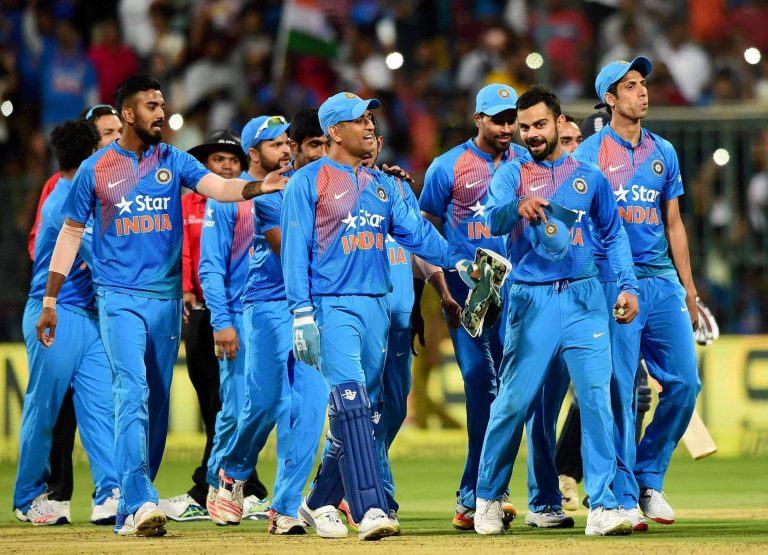Over the last few months, there has been a big debate around the Decision Review System (DRS) and the umpire’s call during LBW decisions referred. Umpire’s call is used for the impact and hitting the stumps part of the LBW review.
For a ball to be completely hitting the stumps, at least 50% of the ball should be hitting the stumps or the stump-zone (from outside of leg-stump to outside of off-stump and the bottom of the bails). Else, the ball-tracking would reflect umpire’s call, and the on-field decision is retained.
The same is the case for the impact. More than half the ball should be impacting the pad in line with the zone of the stumps.
There have been multiple instances of umpire’s call coming up during reviews in the recent games, and it has irked quite a few experts and former cricketers, and a lot of them want ICC to scrap the umpire’s call.
They feel it should either be out or not out and not in-between. When quizzed on his views on the umpire’s call and his suggestions, Virat Kohli did not mince his words and wanted the end of the umpire’s call as he feels it is ‘creating a lot of confusion. Kohli gave the example of a batsman being bowled. Irrespective of where the ball hits the stumps, the bails are going to fall and no percentage comes into play.
Look, I have played a long time when then there was no DRS, right? If the umpire made a decision, whether the batsman liked it or not, it stayed like that; vice-versa, if the umpire gave him not out and it was out, it stayed like that whether it was marginal or not.
According to me, the umpire’s call right now is creating a lot of confusion. When you get bowled, as a batsman you don’t expect the ball to hit more than 50% of the stumps to consider yourself bowled. So, when the ball is shown as clipping the stumps, the bails are going to fall,
Kohli was quoted saying in the pre-match press conference ahead of the first ODI in Pune.
The Indian skipper, who himself has been at the receiving end of a few ‘umpire’s calls’, felt it was ‘common sense, and it should be out even if the ball is clipping the stumps and teams lose the review.
So, from basic cricket common sense, I don’t think that there should be any debates on that. If the ball is clipping the stumps, it should be out – whether you like it or not, you lose the review. And that is how simple the game has to be: if it hits the stumps or it misses the stumps, it doesn’t matter how much it is hitting and those kinds of things. Because it is creating a lot of confusion,
the Indian skipper further explained.
Another factor that has created a lot of debate is the soft signal. On-field umpires need to give a soft signal if they are referring a catch to the third umpire. A lot of it is based on instinct and how the fielding team reacts, and that is a big grey-area that has faced a lot of flak in the recent past.
Kohli had spoken about it at length after the fourth T20I, and he shed more light on it in the press conference ahead of the first ODI as well. He feels the spirit of the game, and its guidelines comes into question.
One more factor that needs to be considered is how the fielding team responds to a dismissal that is claimed is also somewhere you know defining soft signal as well. Again, you have to question what the spirit of the game is and what those guidelines are. Because if things like that happen with the Indian cricket team overseas, then you are talking about a totally different conversation about spirit of the game, and so on and so forth,
Kohli added.


